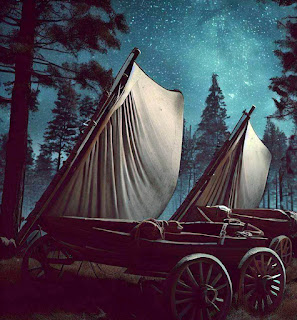Sail-Rana (vehicle)
A sail-rana is a vehicle invented by Vaida, although credited to Lazaro who sold the designs to merchants and engineers in Agrideī. Although it can come in many different shapes and sizes, the core concept is a wheeled boat with a foldable mast and sail. When the sail is deployed, the passengers can catch the wind and roll northwestward over land, since this is the direction in which the wind normally blows. (See Agrideī for more information). The boat can also roll into the ocean or a river, where a sailor can choose to either row, ride the current, or continue sailing. Because the wind hitting the large sail (usually rectangular) tips the structure forward, it is advised that passengers sit in the back. A sail-rana has a steering wheel which tilts the wheels on land and the rudder in water. It also comes with a small floor-hatch through which passengers can switch gears and shift between tilting wheels and tilting the rudder.
Most engineers in Agrideī found themselves enthralled by the design, and many work to improve it with varying features. As a result, no two sail-rana are exactly identical. It should be noted that the people of Agrideī are technologically primitive, so they have not mastered the art of sailing against the wind (or perpendicular to it). Most sailboats in Agrideī are equipped only with rectangular sails for moving downwind, and the sail-rana is no exception to this.
The original inventor, Vaida, perfected her model and built her first working sail-rana in her early teens. She had studied math and science up until this point, having been taught by her father to always seek knowledge. She originally built the sail-rana as a vehicle that could let her freely leave Bones City and travel the continent, searching for Interfecti to fight. When she later met and joined Lazaro, they built additional sail-ranas and sold the design. Lazaro took credit for its invention, but Vaida left a journal in Bones City that details its creation. This journal also contains everything she learned about science and math, often through her own primitive experimentation.


Comments
Post a Comment